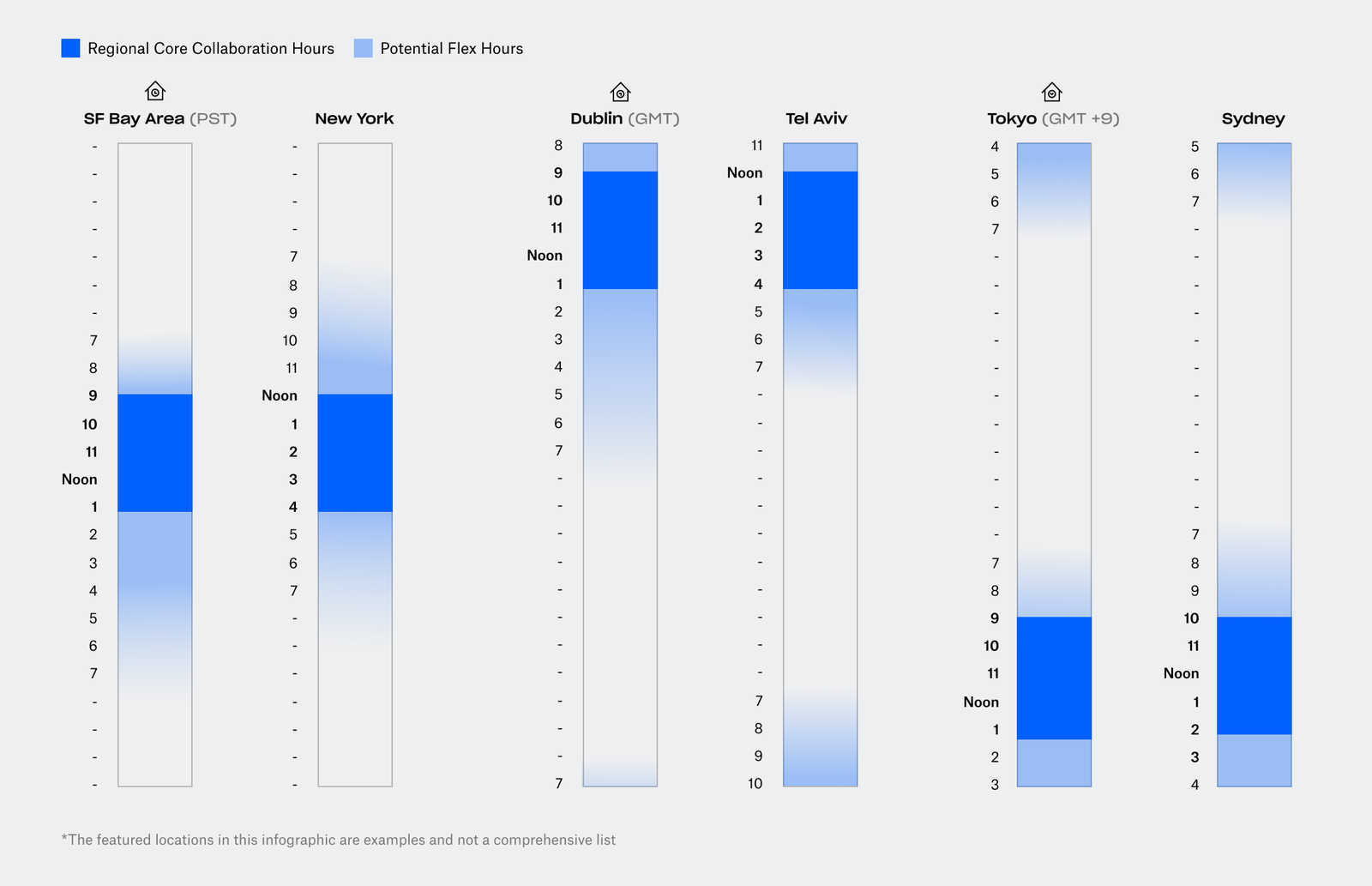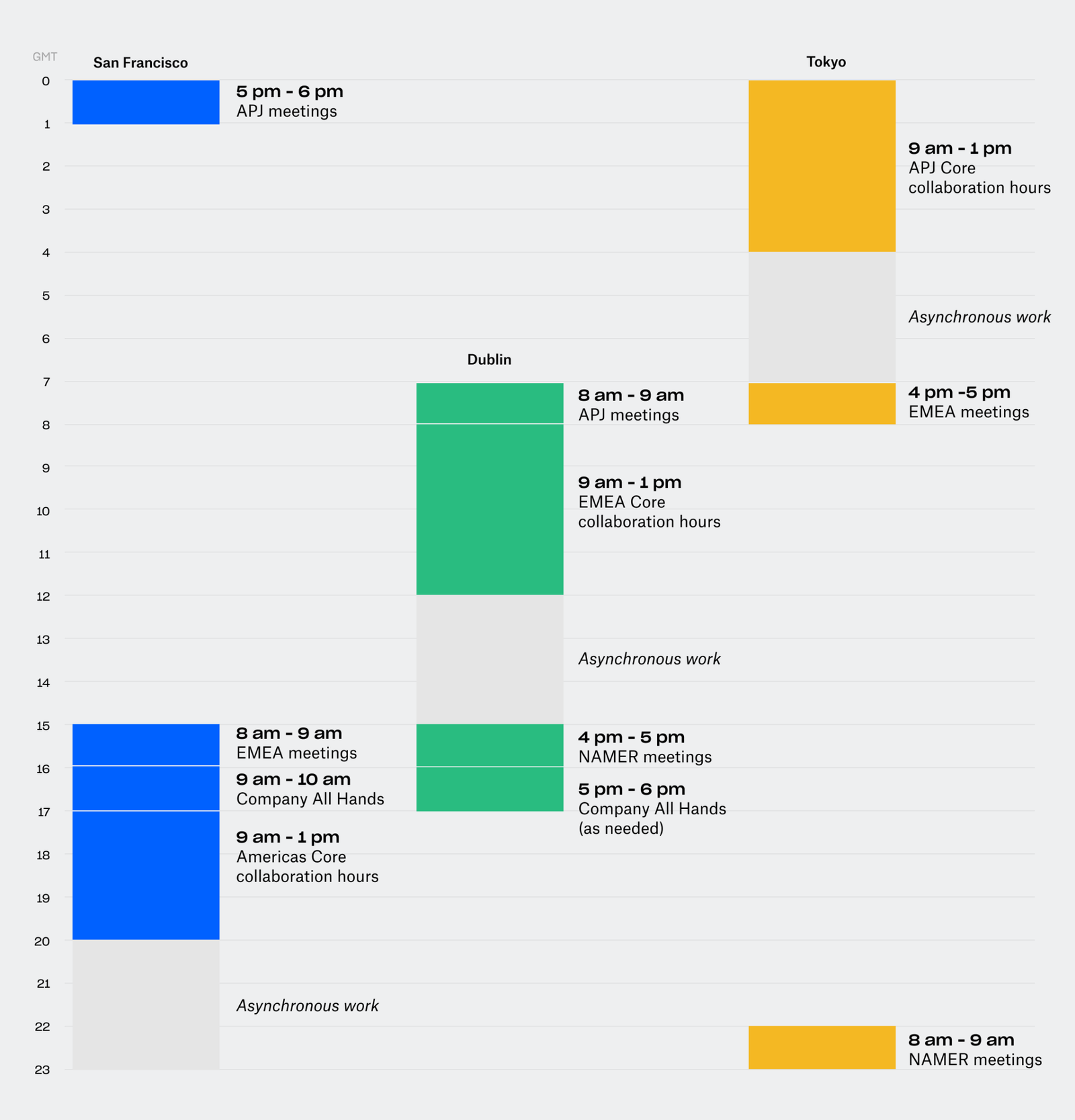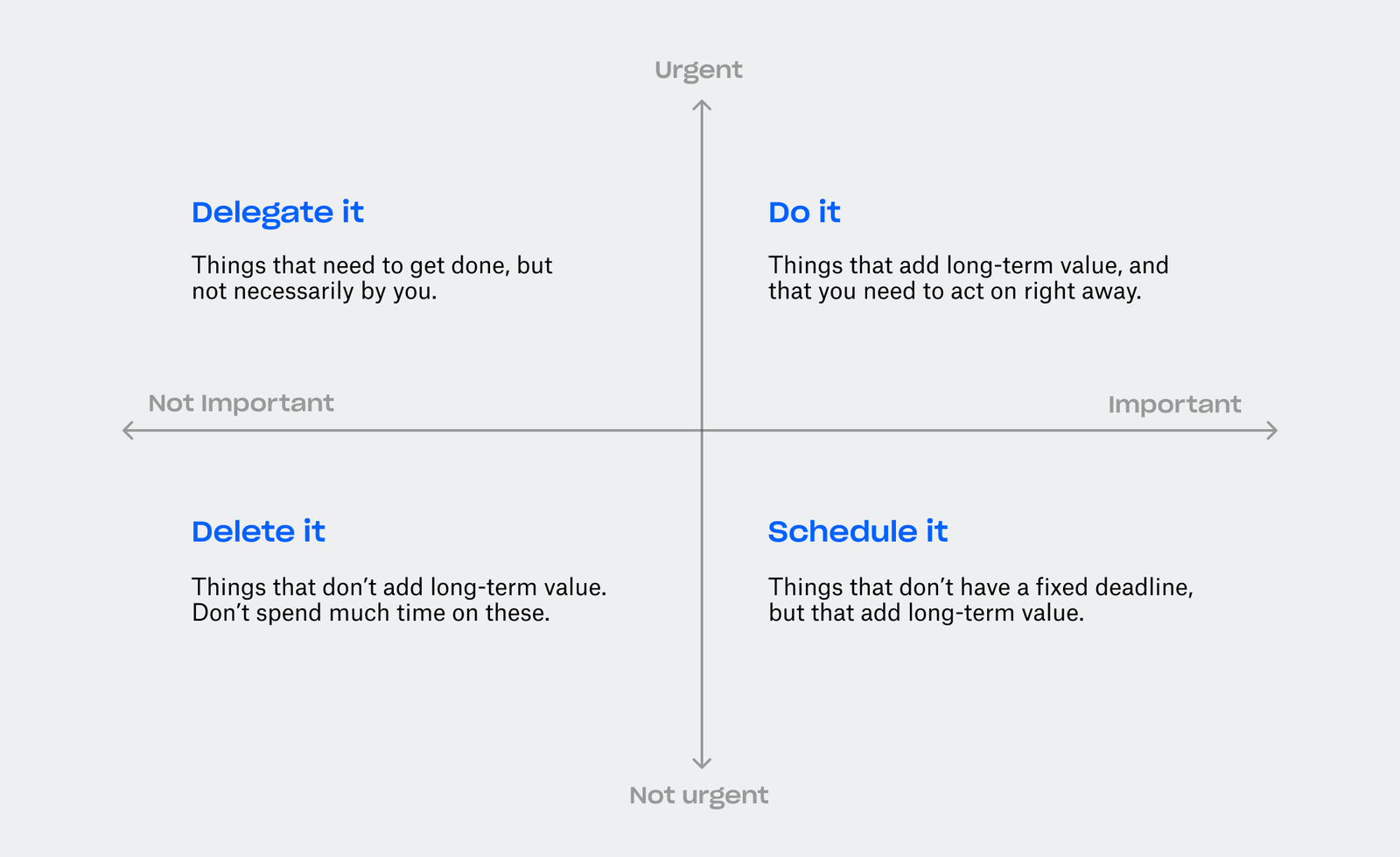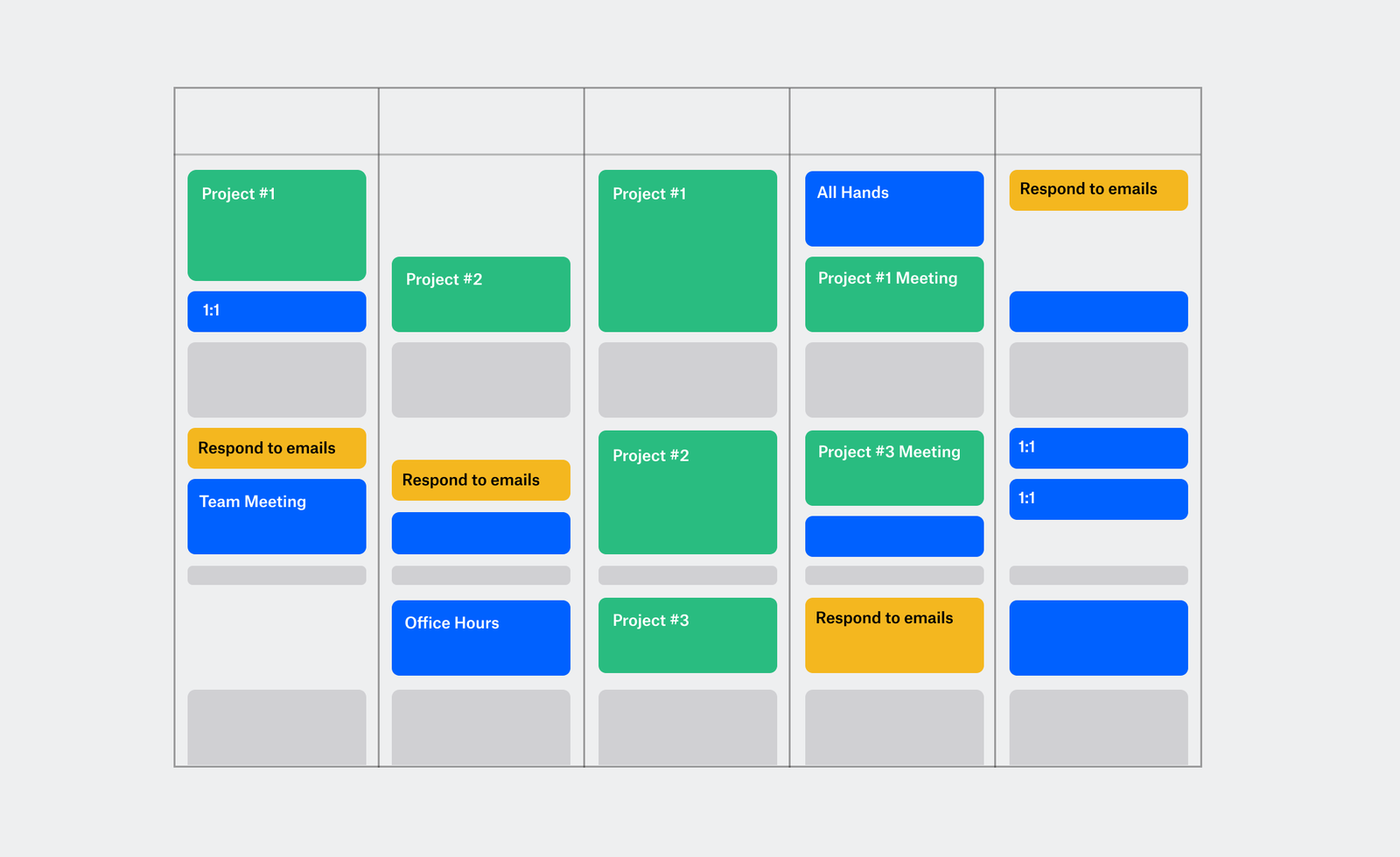.png)
Work is changing at warp speed. The rules and expectations around when, where, and how work happens are all in flux. It can be dizzying. At Dropbox, we’re going Virtual First, which means we’ll be mostly distributed with in-person gatherings for team collaboration (once it’s safe to do so). This is new to us and we’re still learning how to do it well. We wrote some principles based on our experiences so far and and included resources about adapting to Virtual First work. We’re publishing this Virtual First Toolkit, and we’ll practice, test and add more content as we learn. This piece is about managing your time in Virtual First. You can visit the rest of the Virtual First Toolkit here:
- How to shift your mindset for Virtual First
- How to stay well
- How to support your team
- How to communicate effectively
The WHO has called workplace stress the health epidemic of the 21st century. An always-on work culture, where technology pings us all day and night, plays a role in this. With everyone working more flexibly across timezones, the temptation to check Slack at all hours will be even greater—so you’ll need to be thoughtful about how you manage your time. In this section, you’ll find ways to own your workweek, so it doesn’t own you.
 Get in the virtual (time)zone
Get in the virtual (time)zone
Right now, your team may mostly be based in one place. But soon, they’ll be spread across many more locations and timezones. This presents a challenge: How do you collaborate with teammates in other places, without taking tons of meetings after hours? Preserving work-life balance in Virtual First will require creating a shared structure for when to come together.
Be online, at the same time (sometimes)
Research shows that burstiness—working together at the same time in short bursts—can be especially inspiring and productive for virtual teams. Try to find a range of time each day that everyone can be online for collaboration hours. Coworkers will know when to have team working sessions and when to spend time on independent tasks, which can help reduce unnecessary meetings. At Dropbox, we’re setting 4-hour collaboration blocks for each region and encouraging employees to design their own schedules beyond that. But we’re asking that everyone compromise where needed to meet with people from different time zones. Here’s what this might look like for companies with teams in different regions:

Collaboration hours don’t mean scheduling Zoom calls for four hours straight every day—they just mean being available for synchronous communication: responding to teammates, discussing ideas, and making things at the same time. (Note: they also don’t mean a 4-hour workday ![]() .)
.)
Go non-linear
The good news about dedicating four hours to syncing each day, is that you’ve got four hours leftover for deep, asynchronous work. Scheduling uninterrupted blocks is an effective strategy for fostering focus. (In our recent study with the EIU, for example, having a firewall that blocks non work-related websites made no difference to focus, while scheduling blocks of meeting-free time made workers three times more likely to be highly focused.) Outside of collaboration hours, try to design a non-linear schedule that makes sense for your life. If this means breaking from a typical 9-5 schedule that’s okay! If you’re making an impact and collaborating well, your team should be all for it. Here are some sample non-linear schedules:

Flex for friends
As you make the transition to a more distributed way of working, you’ll need to balance your personal priorities and non-linear schedules with the needs of your teammates. This will require some flexibility and good judgment from everyone you work with. For example:
- When scheduling meetings, do your best to respect colleagues’ collaboration hours
- If a company-wide event, like All Hands, falls slightly outside your collaboration hours, you can end your day early (or start late) to accommodate it without burning yourself out
 Know how you work best
Know how you work best
One person’s enlightened way of working is another person’s recipe for burnout. Understanding what style of work suits you is a good first step in optimizing your time. To find how you work best, consider:
When are you most (and least) productive?
If you’re most energetic in the morning, try to schedule complex deep thinking, decisions, and negotiations then. If your energy dips between 2-4 pm, try to schedule breaks or do rote tasks like organizing your inbox during this block.

How do you like to work?
Maybe you’re a dyed-in-the-wool Arranger who loves managing every detail of a project. Or maybe you’re a Strategic type who keeps everyone focused on the big picture. Explore your style in a creative energy worksheet, and consider sharing your findings in a Working With Me doc.
How can you balance your preferences and commitments?
If you’ve got a daily 8 am sync but your brain doesn’t turn on until 9:30 am, consider asking your team to move the sync to a shared cloud doc. If you’ve got a can’t-miss meeting on Friday but Zoom fatigue has set in by then, try turning off your camera.
 Clarify your goals
Clarify your goals
When you’re aiming for impact (not just busyness), it’s a good idea to know what impact looks like. Once you’ve figured out how you like to work, you can start developing some goals to guide you.
Start with your team goals
What is your team trying to get done this year? What are the expectations for your level and role within your org? To keep your personal priorities in line with your company’s mission, work backwards from the big picture.
Brainstorm your list
Based on your role expectations and team goals, what do you think is most important to focus on? What do you need to accomplish by the end of the year? When you’re done, try to pick 5-7 good options.
Make ’em SMART
Good goals tend to be SMART (specific, measurable, attainable, relevant, and time-bound). For example, walk 30 min, 5 days a week is better than get in shape, which doesn’t specify what the goal means or how to achieve it. As you evaluate your goals, notice which ones are smartest. Make your goals FAST too to drive strategy implementation.
Review and approve
Once you’ve refined your goals, meet with your manager to make sure they ladder up to your team’s priorities. And remember: when it comes to maintaining focus, less is more. So as you finalize your list, try limiting yourself to 5 or fewer goals.
Keep yourself on track
To make progress against your goals, try pre-scheduling monthly checkins with your manager during a regular 1:1. You can also add reminders into your calendar, if you’d like to check in on your own progress.
 Design your workweek
Design your workweek
If the workplace now means wherever work happens, then the workweek means whenever it happens best for each of us. Here’s how to design a schedule that fits your style while helping you make an impact.
Prioritize your tasks
With a long list of to-dos, it can be tempting to prioritize the first ALL-CAPS email in your inbox. Before you jump in, try to take a step back. Which tasks add the most long-term value? Which don’t? Which are legitimately urgent versus not urgent at all? We like this framework:

Audit your calendar
Take a look at your calendar on a typical week. What do you spend most of your time on? When do you tend to get interrupted or take breaks? How much of your time is planned vs. reactive? Knowing your style and goals, what would you cut or re-arrange?
Plan out your schedule
Now that you know what to focus on (and what not to focus on), it’s time to schedule your week. In your calendar:
- Block off time for critical deep work
- Schedule meetings for important projects that require collaboration (don’t forget about collaboration hours)
- Reschedule any conflicts that come up
- Add in time for lunch, breaks, or self-care (meditation, yoga) if it’s helpful

Communicate your plan
As you define your schedule, be sure to set expectations with your lead and coworkers. A simple, “I’ll be available during these hours, and offline during these hours” will do. You can also adjust your calendar and chat settings:
- Set an out-of-office reminder to decline new meetings during your work blocks
- Block off working hours in your timezone
- Make your Calendar private if you need more control or if people keep scheduling over your work blocks
- Set Do Not Disturb during work hours

.png/_jcr_content/renditions/blog_(960x960).webp)
.png)
.png)